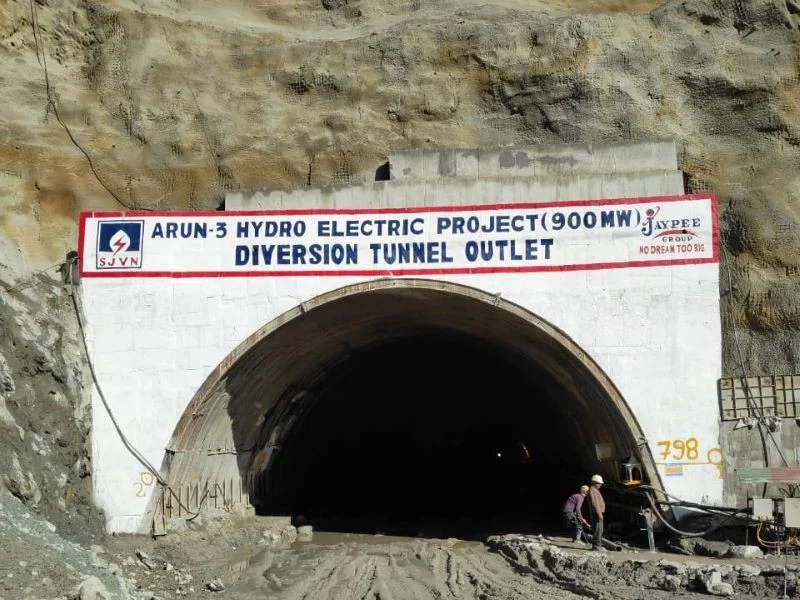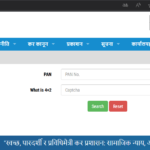The Arun 3rd Hydroelectricity Project is one of Nepal’s most significant hydroelectric ventures. Located on the Arun River in the Sankhuwasabha District of eastern Nepal, the project has a capacity of 900 megawatts (MW) and is expected to be a major contributor to Nepal’s electricity supply.
Key Details about the Arun 3rd Hydroelectricity Project:
– Capacity: 900 MW.
– Location: Sankhuwasabha District, eastern Nepal.
– River: Arun River, a major tributary of the Koshi River.
Investor and Developer:
The project is being developed by **Satluj Jal Vidyut Nigam (SJVN)**, an Indian government-owned company. SJVN secured the contract to develop the Arun 3 project under a build-own-operate-transfer (BOOT) model for a period of 25 years. After this period, the ownership of the project will be transferred to the Government of Nepal.
Project Highlights:
– Investment: The total estimated investment in the project is around USD 1.04 billion.
– Power Generation: The project will generate approximately 4,018.87 gigawatt-hours (GWh) of electricity annually.
– Employment: The project is expected to create significant employment opportunities during both the construction and operation phases.
– Economic Impact: Besides electricity generation, the project will help in infrastructure development in the region, including roads and transmission lines.
The Arun 3rd Hydroelectricity Project not only focuses on power generation but also involves significant efforts in power transmission infrastructure to ensure the electricity produced is efficiently delivered to both domestic and international markets. Here’s more about the power transmission aspects of the project:
Power Transmission Infrastructure
1. Transmission Lines:
– The Arun 3 project includes the construction of a 217-kilometer-long high-voltage transmission line to evacuate the generated power. This transmission line will connect the power plant to the Indo-Nepal border, where the electricity will be transferred to India’s national grid.
– The transmission line is a 400 kV double-circuit line, which is a high-capacity system designed to handle large amounts of electricity, minimizing losses during transmission.
2. Substations:
– To support the efficient transfer of power, substations are being constructed at various points along the transmission route. These substations will play a critical role in stepping up the voltage for transmission and stepping it down where required, ensuring that the electricity can be efficiently integrated into the grid.
3. Cross-Border Power Trade:
– The electricity generated by the Arun 3 project is intended for both domestic consumption and export to India. Nepal and India have signed agreements to facilitate this cross-border power trade, making the project a significant contributor to regional energy cooperation.
– The transmission line will connect to India’s grid at the Dhalkebar-Muzaffarpur transmission line, which is part of the infrastructure that supports power trading between the two countries.
4. Environmental and Social Impact:
– The development of transmission infrastructure involves significant environmental and social considerations. Efforts have been made to minimize the impact on local communities and ecosystems, including compensation and rehabilitation programs for affected populations.
– Environmental assessments have been conducted to ensure that the construction of transmission lines and substations complies with both national and international environmental standards.
5. Financial and Technical Collaboration:
– The development of transmission infrastructure is being supported by a mix of financial and technical assistance from various stakeholders. This includes international financial institutions and the Indian government, which is keen to secure the electricity supply from Nepal to meet its energy demands.
– Technical expertise is also being brought in from international and regional partners to ensure that the transmission infrastructure is built to the highest standards.
Significance of the Transmission Infrastructure
The transmission infrastructure is critical to the success of the Arun 3rd Hydroelectricity Project. It not only ensures that the electricity generated is efficiently delivered to end-users but also strengthens Nepal’s position as an energy exporter in South Asia. The infrastructure developed under this project will contribute to regional energy security and provide Nepal with a steady source of revenue from power exports.
Moreover, the project sets a precedent for future cross-border energy projects, highlighting the importance of robust transmission networks in harnessing the full potential of hydroelectric resources in Nepal.
Current Status:
As of recent updates in August 2024, the Arun 3 project is in advanced stages of construction, with several milestones already achieved. The project is expected to be fully operational by 2025.
This project is crucial for Nepal’s energy security and is also part of the broader energy cooperation between Nepal and India.
Arun 3rd detail government portal.



